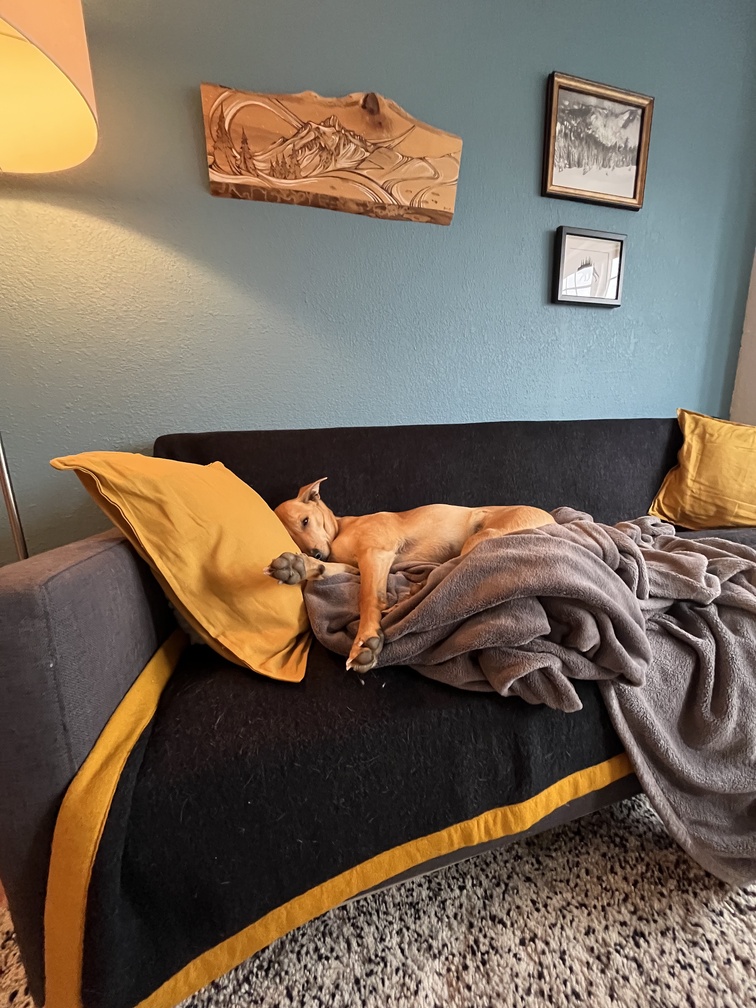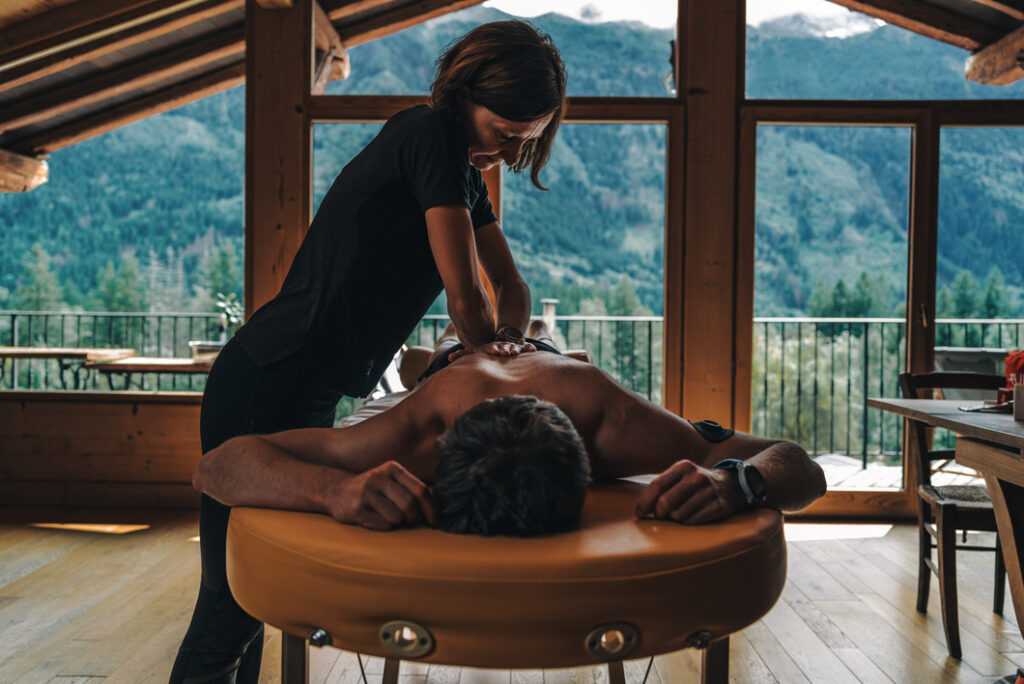A note from Freetrail: The first in a recurring series, the third Tuesday of every month we will be sharing a Coaches’ Corner with Ruby Wyles. This month we dive into Phase One of what an Off Season should look like. Do you regularly take an “off season” or maybe it’s your first time considering one? Dig in for more why’s and how’s for the time that follows your A race of the season.
It’s that time of year again, that time when most athletes’ peak races are over, the holiday season is only-too-quickly approaching, and you’re not sure what training should look like. You’ve wrapped up your racing season after months of hard work and consistent training: hopefully you achieved your goals, but maybe you didn’t. Perhaps you’re already looking ahead to 2024 (lottery season is around the corner), wanting to build off of this year, progress your fitness, and unlock more of your running potential. Or perhaps not, that’s totally okay too!
No matter how you are feeling coming off your 2023 race season, taking an off season is for everyone, even the elites. Set yourself up for a better running year now by committing to the off season.
What is the “off season”?
An athlete’s year can usually be divided into 3 broad windows, or seasons: pre-season, main/race season, and off/postseason, each lasting a matter of months.
- Pre-season: the time for ramping up training volume and intensity to prepare you for the main season.
- Main season: typically involves racing or chasing other fitness-related goals like an FKT attempt.
- Off season: follows the main season with a period of rest and recovery, before transitioning athletes into less structured, foundation-focused training, commonly referred to as “base building”.
This seasonal structure to an athlete’s year is essential for sustained progression and longevity in sports, achieving peak performances and goals, minimizing risks for injuries and burnout, and more! However, in my experience, many athletes are leaving a lot of potential on the table by not structuring their off season optimally, or at all! Driven by the fear of losing fitness during the off season, I see far too many athletes trying to cycle between pre-season and racing indefinitely, or, on the other side of the same coin, misinterpreting the off season as a 3 month training hiatus, thinking that they’ll get back to training after the holidays when they have a race on the horizon. The majority of athletes typically fall into one of these two buckets, so if that’s you, you are far from alone! I challenge you to keep reading and hopefully reconsider your current off season approach.
When is the off season?
When thinking about the off season with athletes, I like to divide it into two parts: Phase One and Phase Two. Here we will focus solely on Phase One: Rest and Rejuvenation, so stay tuned for next month’s Coaching Corner piece discussing Phase Two: Fitness Foundations.
Phase One of your off season begins the day after your last race of the season, usually late Summer or early Fall for most trail and ultra runners. However, your off season can fall anywhere in the calendar year after a peak race or strenuous block of training. For example, the off season of athletes running the Bandera 100-kilometer in January likely coincides with a time when most other runners are ramping up their training volume and intensity as they transition into their preparation and race seasons: February and March.
So, the last race is done, what’s next?
Whether you feel good, bad, or indifferent about your race result and season’s performance as a whole, the off season plays an essential role for every runner, beginners and pros alike, in preparing you for better performances to come.
As uncomfortable as it may be, I recommend athletes take a complete break from all training for a period of one to three weeks; this is what I refer to as Phase One of the off season. When I say all training I’m not just referring to running: this is not the time to take up cycling or strength training! I’m talking about a short period of complete rest: a light walk or gentle yoga is a yes, but hiking or spin class a firm no! This is not just a time for physical rest, but also a time for psychologically resetting.

Why is Phase One so important?
A complete rest period allows for many mental and physical benefits that far outweigh any transient drops in fitness:
- Mental rejuvenation: Training consistently for weeks and months leading up to races requires intense commitment and willpower that draws on your mental energy. This is a common reason for lapses in motivation and readiness to train as you go through a training program, as well as burnout in athletes. The off season is your chance to mentally reset and recharge; as the days go by, you’ll likely notice increased feelings of motivation and desire to train as your mind recovers, preparing you to tackle your next training block enthusiastically!
- Physical rejuvenation: Months of training takes its toll on the body, even for the most experienced and well-coached athletes. Niggles are hard to avoid, and we as runners are notorious for pushing through aches and pains, rationalizing that they are a given for trail and ultra runners. When beginning a training plan or changing up your routine, additional soreness and aches are par for the course, but typically these dissipate a few weeks in. However, running through aches, pains, and niggles indefinitely is not a good idea, and eventually they’ll catch up to you in the form of a bigger injury.
Now is your chance to prevent that! The off season is an investment in your future running self: choosing to take a short period of rest now will reduce your chances of being forced to take a far longer period of rest down the line! And you don’t need fancy recovery boots or cryotherapy either: plenty of research links plain and simple sleep with injury prevention and recovery! The caveat here is that if you are dealing with something more serious than a minor niggle, longer time off may be required. Again, without races on the immediate horizon, now is the ideal time for that too! And, as always, (at any time of the year, not just during the off season) if you have been dealing with stubborn aches and pains for more than a couple weeks, even if you “can” run through them, best check in with a physical therapist or other medical provider.
What to do with the extra time not spent training?
During Phase One of the off season, the focus should be on rest and recovery, and this could take many forms. Take your pick:
- Sleeping in or napping when you would normally be training.
- More home cooking and family meals.
- Binge watching The Great British Bake-Off (or other TV series you’re behind on!)
- Catching up with family and friends (as well as work and boring stuff like emails and “to do” lists you let slip in favor of training!).
- Foam rolling, warm baths, and LIGHT stretching.
This is not at all essential, and is certainly a luxury for most, but now is also a great time for a relaxing vacation, a nice massage or spa day, fancy recovery tools like Normatec boots and cryotherapy, hot tubs and more. A perfectly adequate (and more reasonable!) alternative is lying on the coach with your feet up, TV on, book in hand, or (heaven forbid!) on your phone scrolling social media! You have my permission (as long as it’s not giving you training FOMO, then stop! Cute pet pictures only)!

“But what about my fitness?”
It would be wrong of me to ignore the obvious: with time off training comes detraining and losses in fitness. A 2022 study published in the European Journal of Sport Science by researchers Chen et al, reported reductions in VO2max, stroke volume, and muscle strength following 2 weeks detraining in elite male runners. These consequences are unavoidable, feeding into the fear of taking an off season. For us time-starved athletes who have, for months on end, risen early or trained late, opted out of social functions and family nights, and prioritized good sleep and nutrition over alcohol and late nights out, all in favor of our athletic goals, actively choosing to detrain seems (quite logically!) counterintuitive.
As the study’s authors note, these cardiopulmonary and muscular effects of detraining are likely the result of hematological and neuromuscular changes, such as decreases in blood plasma volume, muscle activation and motor unit recruitment.The good news these are short-term detraining losses and are the very first ones to be gained back once you resume training again in just a matter of weeks: these are not the hard earned gains that take months and years to recover! Furthermore, the endurance athletes in this study actually saw increases in lean mass and maintenance in muscular endurance after the two weeks of detraining: it’s not all doom and gloom!
Concluding thoughts
I’m not here to force you to rest, nor would I want to, but I do hope to guide you towards reaching your athletic potential. The key to sustained performance over the long-term, as well as your next running breakthrough, is sticking to a properly structured training program that includes an off season. There is no hack, no way around the injuries and plateaus that befall those who refuse to rest; not even the most genetically gifted runners in the world are able to sustain high performance and progression indefinitely! Nothing in nature is in bloom year round.
You may be surprised to learn that it’s not uncommon for some of the best runners in the world to take many weeks to months completely off training following a peak race or season. In a 2014 interview with Runner’s World, 5x Olympian Bernard Lagat credits his long and illustrious running career to a 5 week complete break each year, during which he said he does “nothing, just eating and playing with my children”. I can’t imagine that the short-term effects of detraining have hindered Lagat long-term, in fact, I suggest quite the opposite! Lagat, like I advise all runners to do, chooses to take an off season instead of being forced to take far more time off later due to injuries, illness, or burnout. If Lagat can take five full weeks off, I figure we can all take two or three!
Stay tuned for “Off Season Phase Two: Fitness Foundations” next month.

References
Pereira, Sonali, Swathi Vinod, and Akshaya Periasamy. “Off-Season break, quality of life & sport satisfaction among elite Indian athletes.” World Health 33 (2003).
Chennaoui, M., Vanneau, T., Trignol, A., Arnal, P., Gomez-Merino, D., Baudot, C., Perez, J., Pochettino, S., Eirale, C., & Chalabi, H. (2021). How does sleep help recovery from exercise-induced muscle injuries?. Journal of Science and Medicine in Sport, 24(10), 982–987. https://doi.org/10.1016/j.jsams.2021.05.007
Chen, Y. T., Hsieh, Y. Y., Ho, J. Y., Lin, T. Y., & Lin, J. C. (2022). Two weeks of detraining reduces cardiopulmonary function and muscular fitness in endurance athletes. European Journal of Sport Science, 22(3), 399–406. https://doi.org/10.1080/17461391.2021.1880647
https://www.runnersworld.com/advanced/a20840861/q-a-with-bernard-lagat 5 Minutes with Bernard Lagat 03/11/2014 By Cathal Dennehy in Runner’s World
